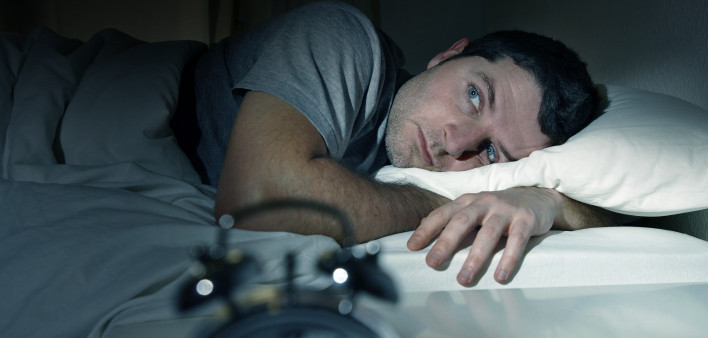Among male veterans living with HIV, having insomnia is associated with a higher risk of cardiovascular disease (CVD) compared with not having difficulty sleeping.
Publishing their findings in the Journal of Acquired Immune Deficiency Syndromes, a research team led by Jesse C. Steward, PhD, of the department of psychology at Indiana University–Purdue University in Indianapolis, analyzed data on 3,108 HIV-positive members of the Veterans Aging Cohort Study Survey Cohort.
The study members were asked to rate their difficulty falling or staying asleep on a five-point scale.
Ninety-seven percent of the participants were men, and 66% were Black. They had a median age of 49 years old. Upon entering the study, 59% reported some level of insomnia symptoms.
During a median follow-up of 10.8 years, 8.6% of the cohort members experienced a total of 267 CVD incidents, including myocardial infarction (heart attack), stroke or coronary artery revascularization (repair of the arteries).
Among the 1,270 (40.9%) of the cohort members who reported no difficulty falling or staying asleep, 8.1% experienced a total of 103 CVD incidents. Of the 285 (9.2%) who weren’t bothered by insomnia, 8.4% experienced a total of 24 CVD incidents. Of the 643 (20.7%) who were bothered a little by insomnia, 8.1% experienced a total of 52 CVD incidents. Of the 465 (15.0%) who were bothered some by insomnia, 8.6% experienced a total of 40 CVD incidents. And of the 445 (14.3%) who were bothered a lot by insomnia, 10.8% experienced a total of 48 CVD incidents.
The study authors adjusted the data to account for differences between the study members in demographics; CVD risk factors; additional potential factors that might have driven CVD risk, including hepatitis C, kidney disease, anemia, alcohol use and cocaine use; and HIV-specific factors, including viral load, CD4 count and antiretroviral regimen.
They found that compared with those who reported no problems sleeping, those who were bothered a lot by insomnia had a 66% greater risk of CVD incidents during follow-up.
This finding persisted after the authors adjusted the data to account for use of non-benzodiazepine sleep aids (benzodiazepines are tranquilizers such as Xanax or Ativan), which shifted the risk increase to 62%.
However, after adjusting the data to account for depressive symptoms or antidepressant medication use, the increased risk of CVD incidents associated with insomnia, at 51%, was just shy of statistical significance, meaning it may have been driven by chance.
“Taken together,” the study authors concluded, “the present results suggest that highly bothersome insomnia symptoms may be an independent predictor of incident [new] CVD events among HIV-infected adults, although the overlap with depression and its treatment needs further investigation.”
Further research, the investigators stated, “could lead to the identification of a novel, modifiable risk factor for HIV-CVD and could inform the development of new primary prevention programs that include insomnia intervention to prevent CVD in people with HIV.”
To read the study abstract, click here.







Comments
Comments